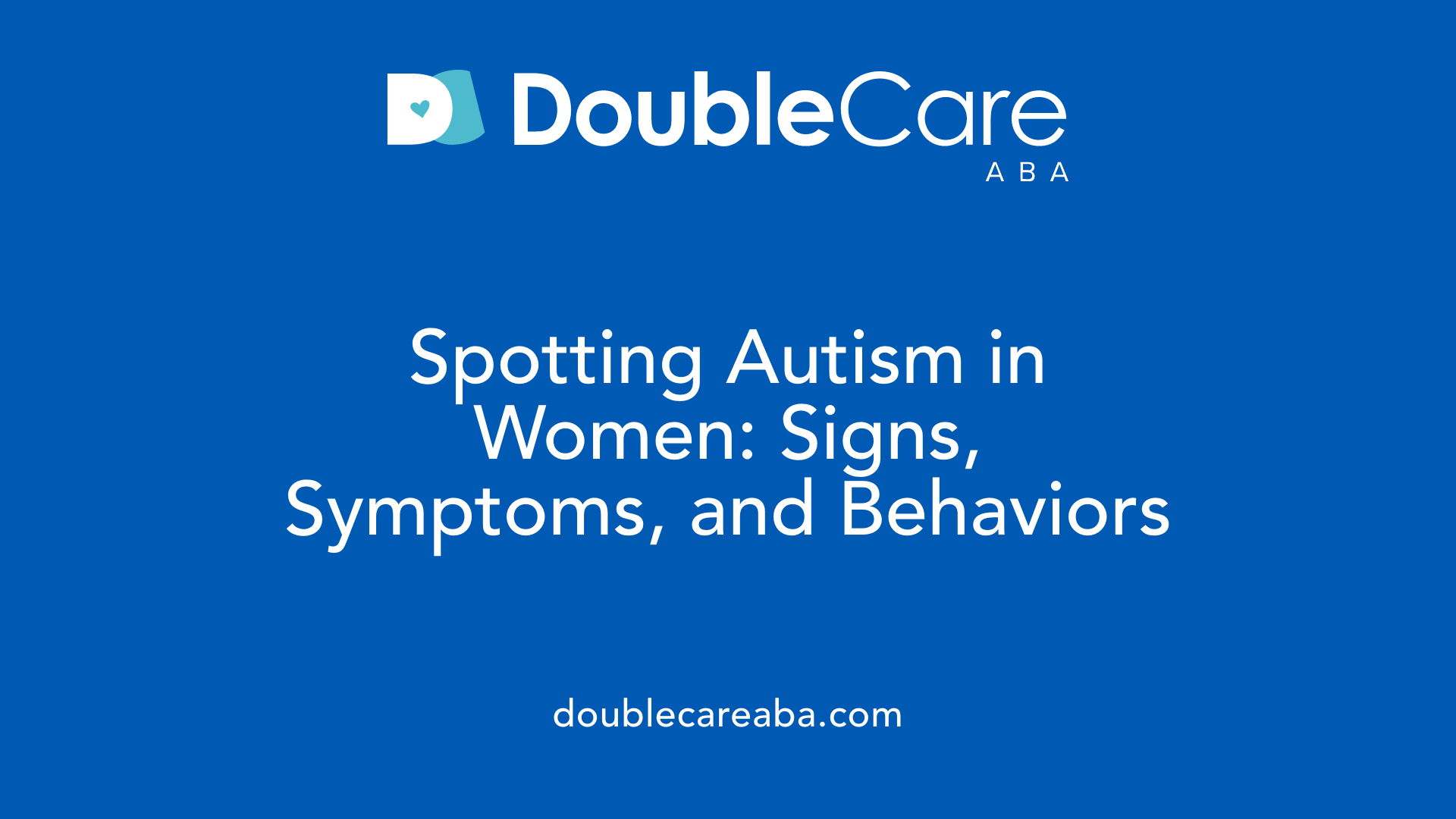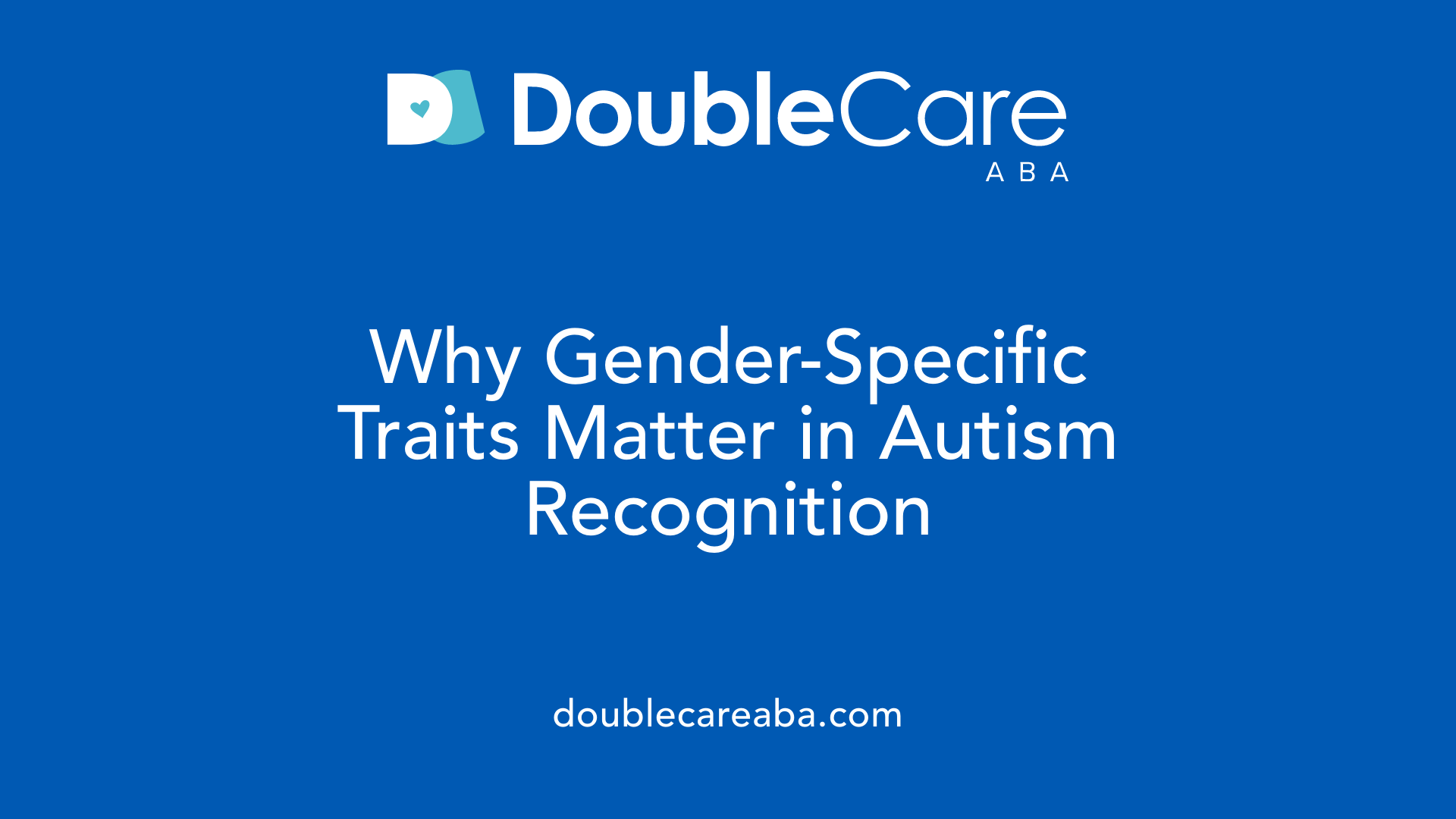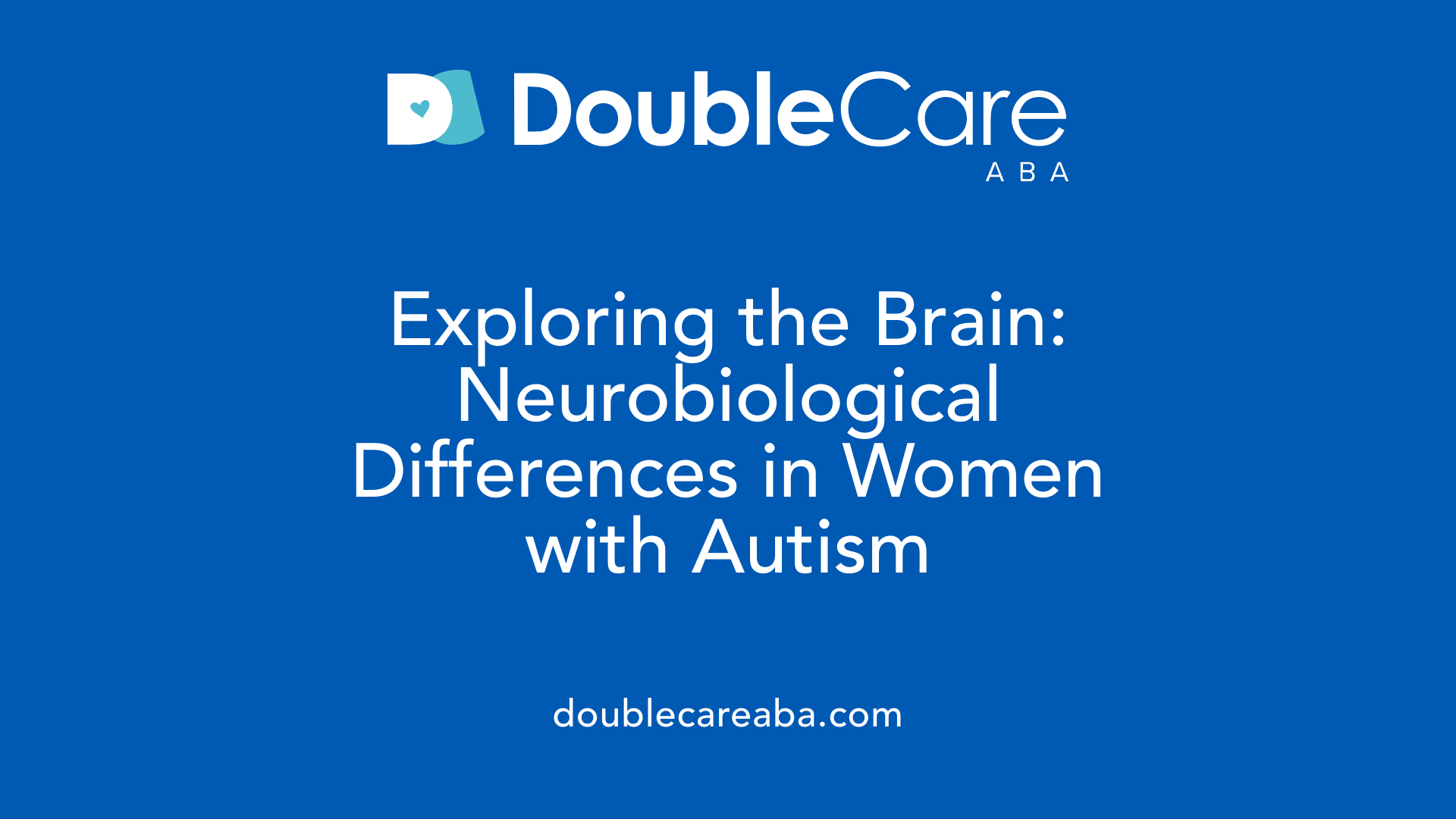Exploring the Hidden Dimensions of Autism in Women
Autism spectrum disorder (ASD) has long been understood through a male-centric lens, leading to a significant underrecognition of its presentation in women. This comprehensive overview delves into the distinct ways autism manifests in females, emphasizing the importance of tailored diagnostic approaches, understanding neurobiological differences, addressing mental health challenges, and expanding support systems.
Signs, Symptoms, and Behavioral Traits of Autism in Women

What are the signs and behavioral characteristics of autism spectrum disorder in women?
Autism spectrum disorder (ASD) manifests differently in women compared to men, often with more subtle signs that can easily be overlooked. Women with autism frequently display challenges in social interaction but tend to mask these difficulties through various strategies, making their symptoms less obvious. They might struggle with understanding social cues, forming and maintaining friendships, or navigating social norms, but often compensate by mimicking behaviors, rehearsing social scripts, and forcing eye contact.
Masking behaviors are common among autistic women. They might imitate facial expressions, gestures, or speech patterns to blend in better and appear socially competent. Some women develop meticulous routines and rehearse conversations to avoid social mishaps. These efforts can help them integrate socially but often lead to emotional exhaustion and mental fatigue.
Internally, women with autism are more prone to experience mental health issues such as anxiety and depression, often stemming from internalized struggles to meet societal expectations. Emotional regulation can be challenging, and feelings of overwhelm, stress, or sadness are common.
Sensory sensitivities also play a significant role in their daily lives. These sensitivities can be triggered by sounds, bright lights, textures, or smells, leading to discomfort and avoidance behaviors.
Repetitive behaviors may include subtle stimming activities like skin picking, hair twirling, or nail biting, which can be internalized or less noticeable. Many women also develop intense interests that are socially acceptable, such as a fascination with celebrities, animals, or specific hobbies. While these interests can be a source of joy, they may also serve as coping mechanisms.
Challenges extend to executive functioning, affecting routines, organization, and task management. Women may find it difficult to transition between activities or prioritize tasks, resulting in frustration or perceived disorganization.
Finally, the effort to mask or camouflage their true behaviors often results in significant physical and mental exhaustion. Many women report feeling drained after social encounters, highlighting the toll that constant masking and social navigation can take.
Understanding these nuanced traits is essential for providing appropriate support, timely diagnosis, and tailored interventions, which can significantly improve quality of life for women with autism.
The Importance of Recognizing Gender-Specific Manifestations of Autism

What is the importance of understanding the gender-specific aspects of autism?
Understanding how autism presents differently in females compared to males is vital for several reasons. Traditionally, autism was viewed primarily as a male condition, leading to diagnostic criteria based on male traits. This male-centric perspective contributed to underdiagnosis or misdiagnosis of girls and women.
Research indicates that females on the spectrum often display less obvious behaviors. They may internally internalize their struggles by developing anxiety, depression, or eating disorders, and tend to mask or camouflage their symptoms. This masking includes behaviors like imitating social cues, scripting conversations, suppressing stimming, and engaging in socially acceptable interests such as animals or celebrities.
Because of these subtler traits, many women and girls are unaware of their autism until adulthood, when these coping mechanisms become exhausting or when mental health conditions prompt evaluation. Accurate diagnosis tailored to gender-specific features enables access to targeted support and interventions that suit their unique needs.
Differences in presentation between males and females in autism symptoms
| Aspect | Males with Autism | Females with Autism | Description |
|---|---|---|---|
| Social Skills | More overt difficulties | Better reciprocal conversation skills | Females often engage more in social imitation and understanding social cues, masking difficulties |
| Interests | Focused on objects or systems | Socially acceptable interests like animals or celebrities | Females develop more socially normative interests which can obscure diagnoses |
| Repetitive Behaviors | Obvious and frequent | Less overt, more subtle | Repetitive behaviors in women may be hidden or less recognized |
| Masking & Camouflaging | Less frequent | Common, leading to later diagnosis | Masking involves hiding symptoms and mimicking others' behaviors |
| Diagnosis Age | Often diagnosed earlier | Often diagnosed later or misdiagnosed | The masking and subtlety delay recognition in females |
Impact of societal gender norms and expectations
Society's expectations influence how behaviors are perceived. Girls often develop social skills to adhere to societal norms, which can act as a form of masking their autism traits. Behaviors like being quiet, studious, or interested in traditionally feminine hobbies are encouraged and can be mistaken for typical behavior.
This societal bias contributes to clinicians and parents overlooking signs of autism when girls do not fit the stereotypical male presentation. Additionally, societal norms may pressure girls to underplay struggles, further delaying diagnosis.
Consequences of underdiagnosis or misdiagnosis of women
When women are not diagnosed early, they miss out on vital support and interventions that can improve their quality of life. Underdiagnosis can result in ongoing mental health issues, such as anxiety, depression, and self-injury, often attributed inaccurately to other psychiatric conditions.
Misdiagnosis can also lead women to be labeled with mood or personality disorders, which do not address the core autism traits. This can hinder access to autism-specific therapies and accommodations, and increase the risk of social isolation, burnout, and mental health crises.
Benefits of accurate, early diagnosis tailored to gender-specific features
Early detection allows timely intervention, which can foster social skills, emotional regulation, and independence. Tailored support recognizes the unique presentation in females, ensuring therapies address internalized symptoms and masking behaviors.
Early diagnosis also reduces mental health burdens by providing appropriate coping strategies, social skills training, and community resources. It allows women and girls to understand their neurodiversity, embracing their identity and fostering self-acceptance.
The role of societal awareness, clinician training, and diagnostic tools in improving detection
Raising awareness about gender differences in autism is essential. Education for healthcare professionals on the diverse presentations in females improves diagnostic accuracy.
Developing gender-sensitive diagnostic tools and criteria, including checklists that account for masking and internalizing behaviors, helps identify cases that might otherwise be missed.
Community support, inclusive education, and advocacy programs play critical roles in reshaping perceptions. As society's understanding evolves, more women and girls will access support, fostering a more inclusive environment where neurodiversity is recognized and celebrated.
Distinct Features and Presentation of Autism in Female Populations

How does autism tend to present differently in women compared to men?
Autism in females often manifests in ways that are subtler and more difficult to recognize than in males. While traditional diagnostic criteria were developed based on male presentations, recent research highlights distinct differences in how autistic women express and manage their symptoms.
One prominent feature is the tendency of women to mask or camouflage their autism. Camouflaging behaviors include imitating social cues, scripting conversations in advance, suppressing stereotypical behaviors like stimming, and devising strategies to navigate social interactions more smoothly. For example, autistic women may force eye contact or imitate facial expressions to blend into social settings, which can look like social competence but often leads to exhaustion and emotional stress.
In terms of interests, women on the spectrum might develop passions that align with socially accepted hobbies, such as fashion, celebrities, animals, or literature. These interests, although intense, are less likely to be perceived as autistic traits because they fit societal norms, masking the underlying neurodivergence.
Moreover, autistic women tend to have better reciprocal conversation skills compared to autistic males. They often demonstrate higher verbal abilities, use more nonverbal cues effectively, and are better at understanding social norms superficially. These skills may help them integrate socially, but they often do so at the expense of internal stress and masking.
A significant aspect of presentation in females is the development of internalizing disorders like anxiety and depression. Because of their efforts to hide difficulties, many women experience heightened mental health issues over time, which can overshadow or be mistaken for primary mental health conditions rather than signs of autism.
Societal influences play a big role in how symptoms are managed. Gender expectations encourage women to be nurturing, social, and emotionally expressive, which can lead autistic women to suppress or hide their struggles, further delaying diagnosis.
This culmination of masked behaviors, socially acceptable interests, and internalized mental health issues make autism in women challenging to diagnose early. Recognizing these differences emphasizes the importance of nuanced assessment tools and increased awareness among clinicians.
| Feature | Typical Presentation in Males | Presentation in Females | Additional Details |
|---|---|---|---|
| Social Skills | Overly obvious deficits | Better conversation skills, social mimicry | Females often imitate and script interactions |
| Interests | Repetitive, unusual interests | Intense interests aligned with norms (e.g., celebrities) | Interests may appear typical but are obsessive |
| Masking | Less common | Common, involves camouflage behaviors | Masking leads to exhaustion and burnout |
| Internalizing Behaviors | Less internalization | More internalizing, like anxiety and depression | Can mask core autism symptoms |
| Diagnosis Age | Often diagnosed early | Often diagnosed later or missed entirely | Due to subtlety and masking behaviors |
| Comorbidities | Less frequent | Higher prevalence of anxiety, depression | Internal struggles influence mental health |
Understanding these presentation differences is critical for improving diagnostic accuracy. Clinicians and caregivers should be attentive to less obvious signs and the social context that influences how autism manifests in females.
Early identification and tailored intervention can significantly improve outcomes for autistic women and girls, helping them access support systems and develop coping strategies suited to their unique neurodevelopmental profile. As awareness increases, the goal is to refine diagnostic tools to better recognize the female autism phenotype and provide equitable support for all genders.
Challenges in Diagnosis and the Role of Masking Behaviors

What challenges exist in diagnosing autism in women?
Diagnosing autism in women presents unique difficulties largely due to the way many females with autism camouflage or mask their symptoms. This process, known as masking or camouflaging, involves behaviors such as mimicking social cues, scripting conversations, hiding special interests, and suppressing repetitive behaviors. These strategies help women blend into social environments but often come at a mental health cost, leading to exhaustion, burnout, and increased risk of anxiety and depression.
One of the main reasons for delayed diagnosis is that current standardized diagnostic tools, such as ADOS and CARS, are primarily based on male presentation of autism. These tools assess traits that are more outwardly visible in boys, such as obvious repetitive behaviors and less typical social interactions. As a result, females who display subtler signs—like better social reciprocity, internalized anxiety, or interests that align with societal expectations—often go unnoticed.
Moreover, societal and cultural norms influence how girls and women express themselves. For example, intense interests may resemble typical hobbies like animals, celebrities, or fashion, making it harder to distinguish autistic traits from normative gendered interests. Female autistic individuals may also develop highly developed social imitation skills, which further mask their difficulties.
Diagnostically, this masking leads to greater challenges in differentiating autism from other mental health conditions like social anxiety, depression, or ADHD. Because women often internalize their struggles, they may be misdiagnosed or diagnosed later in life, sometimes only after they have experienced significant mental health issues or social distress.
Another significant issue is diagnostic overshadowing, where clinicians attribute symptoms—like social withdrawal or sensory sensitivities—to other psychiatric conditions rather than autism itself. This bias in assessment and understanding stems from outdated notions that autism is predominantly a male condition, contributing to the gender gap in diagnosis.
Impact of masking on mental health, including exhaustion and burnout
The effort to constantly mask or camouflage autistic traits is mentally taxing. Over time, this persistent suppression of natural behaviors and social responses can lead to severe exhaustion. Many women report feeling drained after social interactions because they are constantly monitoring their expressions, gestures, and speech to avoid revealing their true self.
Masking behaviors also increase vulnerability to burnout—an overwhelming state of physical and emotional fatigue. Burnout can exacerbate existing mental health conditions, including anxiety, depression, and stress disorders, creating a cycle that is challenging to break.
Delayed diagnosis due to masking and gender bias
Because of the masking behaviors and more subtle symptom presentation, autism diagnoses in women often occur later than in males. On average, women receive an autism diagnosis around age 5.6, compared to age 4.8 in boys, though many go undiagnosed until adulthood.
This delay impacts access to early intervention and tailored support, which are crucial in managing autism effectively. The longer a woman goes undiagnosed, the more she may develop secondary mental health conditions and face social challenges that could have been mitigated with earlier recognition.
Difficulty in differentiating autism in women from other mental health conditions
Many traits associated with autism—such as social anxiety, sensory sensitivities, and internalized depression—overlap with conditions like depression, social phobia, and obsessive-compulsive disorder. This overlap complicates accurate diagnosis because clinicians may overlook autism traits when only standard assessments are used.
Women’s ability to camouflage their symptoms further confounds the diagnostic process, making it necessary for healthcare providers to adopt a more holistic approach, including detailed developmental histories, behavioral observations, and consideration of gender-specific presentations.
Diagnostic overshadowing and biases in testing tools
Historically, diagnostic criteria and tools have been biased towards male-typical autism presentations. This bias results in a significant underdiagnosis in females, especially those with average or above-average intelligence and those showing internalized symptoms.
Diagnostic overshadowing occurs when symptoms like anxiety, depression, or behavioral issues are wrongly attributed solely to mental health issues, overshadowing the underlying autism. This misattribution can delay appropriate diagnosis and intervention.
The importance of gender-sensitive assessment methods and holistic evaluation
To improve diagnosis accuracy, a gender-sensitive approach is vital. This includes developing assessment tools that recognize the nuanced and often covert presentation of autism in women.
Holistic evaluations should consider a range of factors: developmental history, internal experiences, masking behaviors, and societal influences. Clinicians are encouraged to receive training on gender differences in autism and to adopt flexible, individualized assessment strategies.
Early, accurate diagnosis not only enables access to tailored therapies and support services but also alleviates the emotional and social distress experienced by many women in silence. Recognizing the diverse ways autism manifests in females is essential for advancing inclusive, effective diagnostic practices.
Neurobiological and Physiological Underpinnings of Autism in Women

Are there neurobiological or physiological differences in autistic women?
Research increasingly shows that autism manifests differently in women at the neurobiological level. Brain imaging studies, which analyze structures and activity patterns in the brain, have identified sex-specific neural differences in individuals with autism. These differences include variations in regions associated with social cognition, motor control, language processing, and self-awareness.
One notable finding is that women with autism often demonstrate unique connectivity and activation patterns in these critical areas. For example, studies have observed that autistic females tend to recruit different brain networks during social and cognitive tasks compared to males. This can result in the more nuanced presentation of autistic traits in women, such as better social imitation or masking behaviors.
Advanced analytical methods, including machine learning algorithms applied to large neuroimaging datasets, reveal that brain organization in women with autism involves distinct functional networks. These networks affect how motor coordination, language, visuospatial attention, and emotional regulation develop and operate. Such variations influence the severity and type of symptoms experienced, often making autism harder to identify in women.
Hormonal influences, particularly prenatal exposure to sex hormones like testosterone, play a role in shaping brain development. These hormonal effects can lead to structural and functional differences in brain regions involved in social and emotional processing, further contributing to gender-specific presentation.
Camouflaging behaviors, a common strategy among women with autism to mask their difficulties, are underpinned by neural responses that differ from those in men. For instance, in areas related to self-representation, such as the ventromedial prefrontal cortex, women may activate these regions differently when engaging in social interactions or when consciously suppressing autistic traits.
Neuroimaging research also highlights that brain networks supporting social cognition and executive functioning tend to be organized uniquely in autistic women. These differences include increased connectivity in certain areas, which may facilitate compensatory strategies like social mimicry and suggest a neurobiological basis for the ability to better mask symptoms.
Overall, these findings emphasize that autistic women possess separate neural signatures that influence their symptom profile, diagnosis, and support needs. Recognizing gender differences in brain architecture and function is crucial for developing more accurate diagnostic criteria and personalized interventions.
Empowering Awareness and Support for Autistic Women
Recognizing the unique manifestation of autism in women is a vital step toward fostering a more inclusive and understanding society. With earlier diagnosis, tailored interventions, and supportive communities, autistic women can thrive, breaking down stereotypes and overcoming challenges posed by masking and societal expectations. Continued research into gender-specific neurobiology, mental health, and social experiences will further refine support systems and promote acceptance, ultimately enhancing quality of life for women on the spectrum.
References
- Understanding undiagnosed autism in adult females - UCLA Health
- Signs of autism in women and girls
- Autism in Women: Symptoms, Causes, Diagnosis, and Treatment
- Autistic women and girls
- Female autism checklist | Oxford CBT
- How is Autism Different in Women? - Adult Autism Health Resources
- Signs of autism in adults - NHS
- Women in Autism















